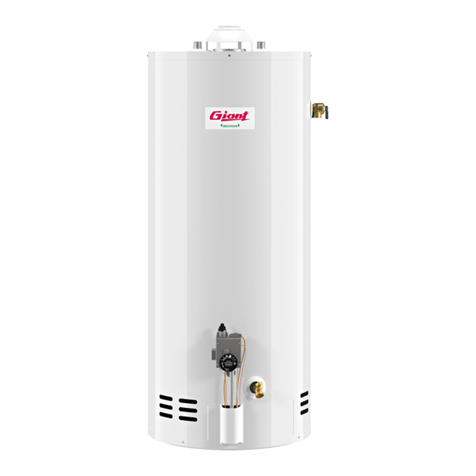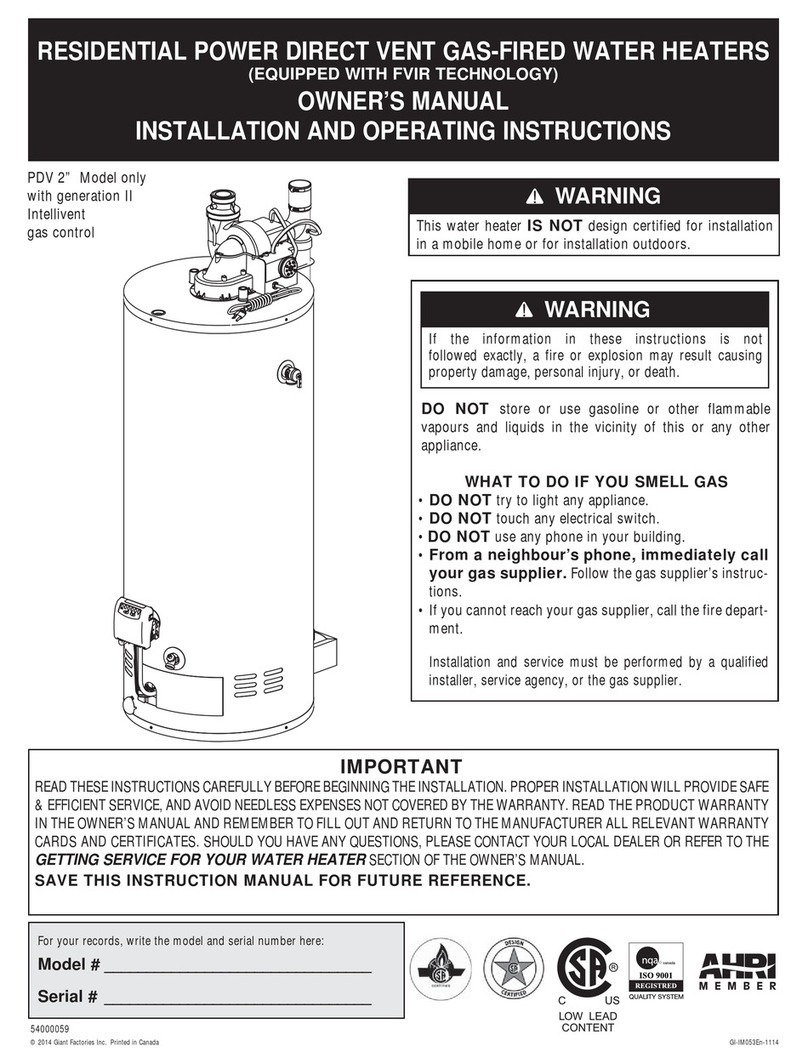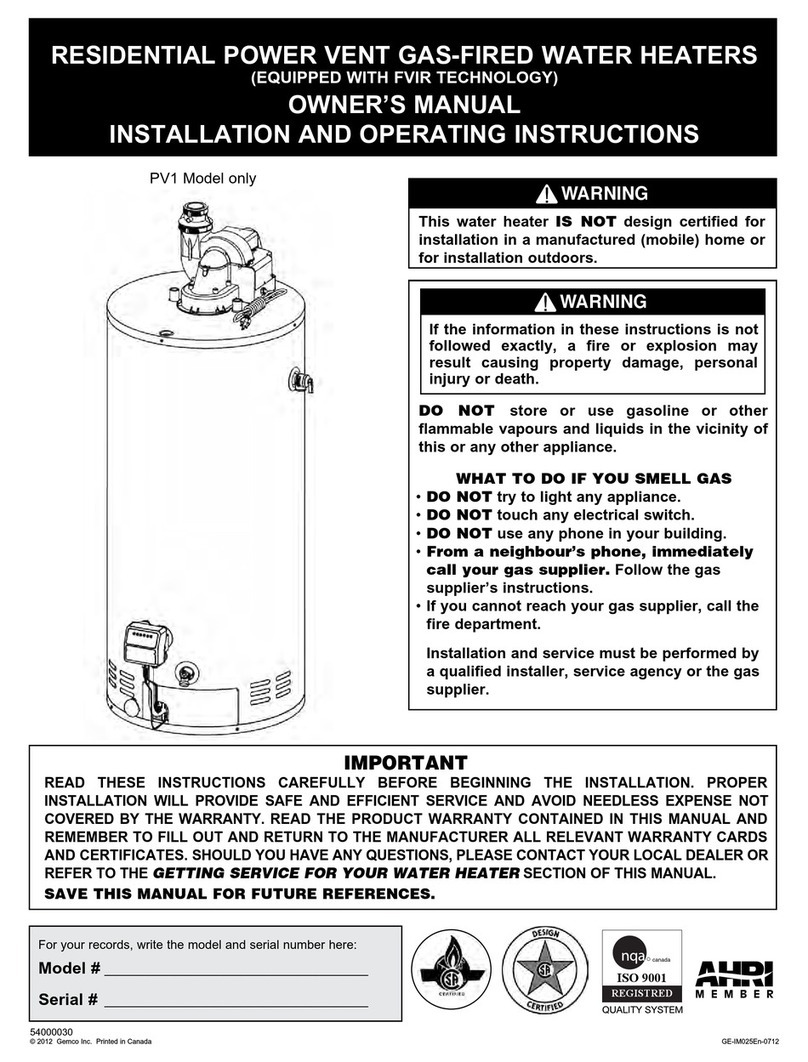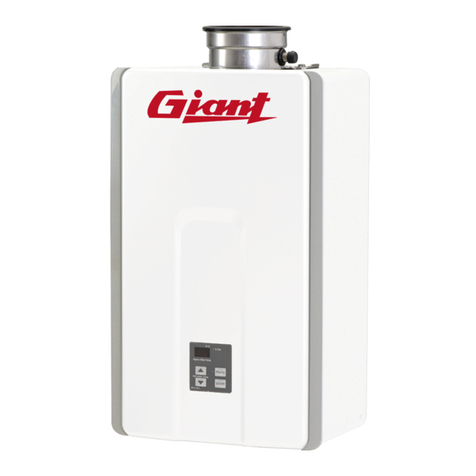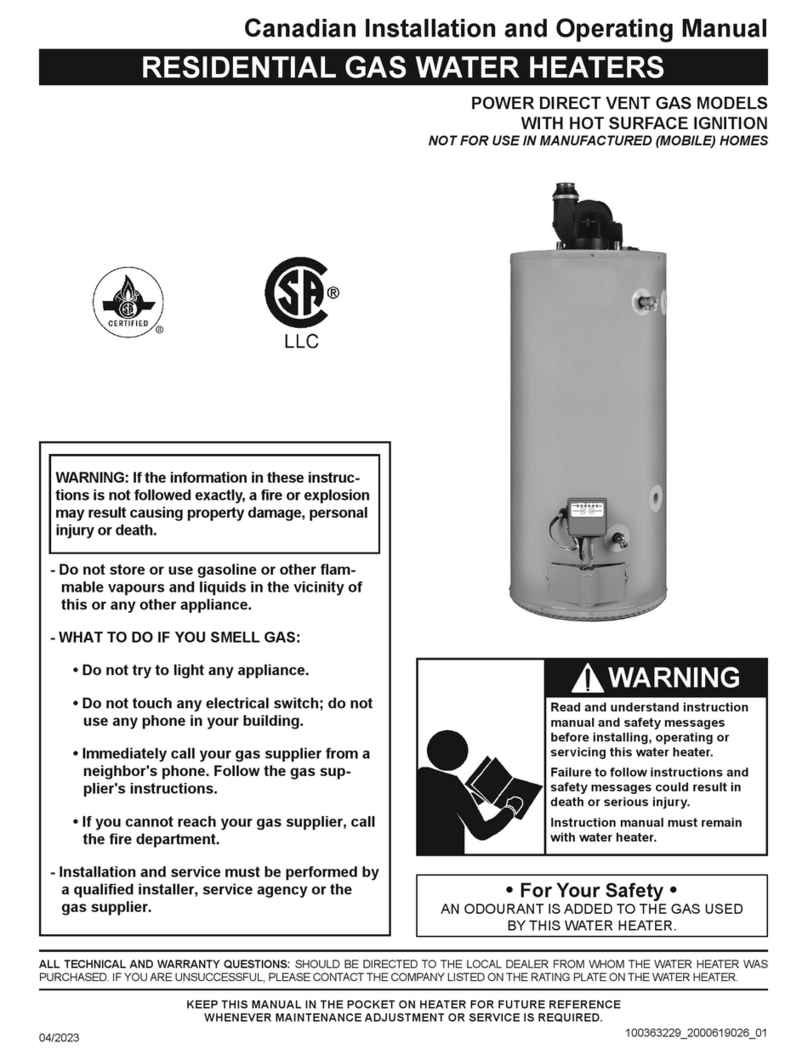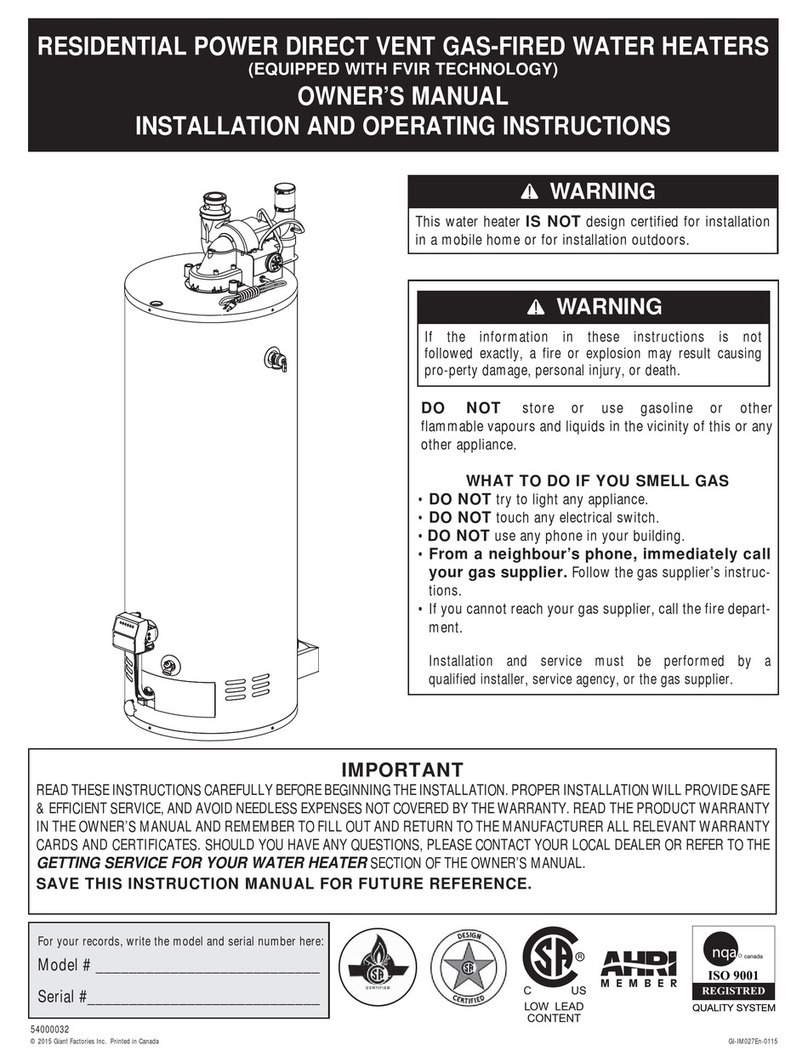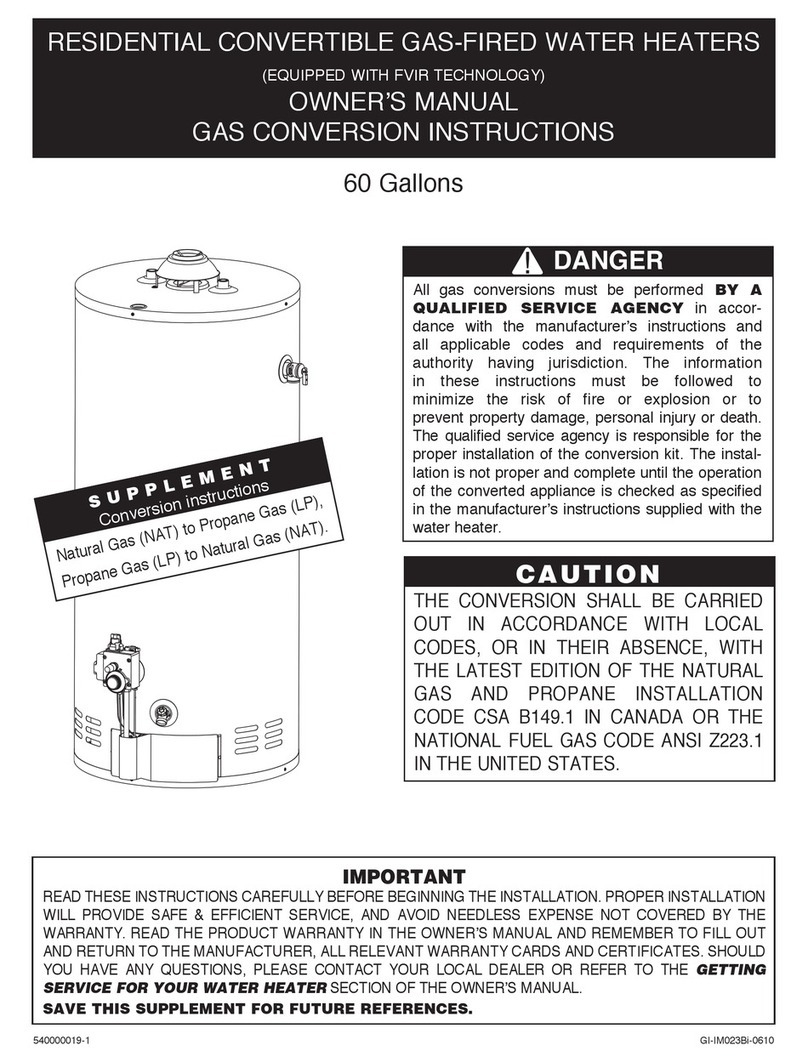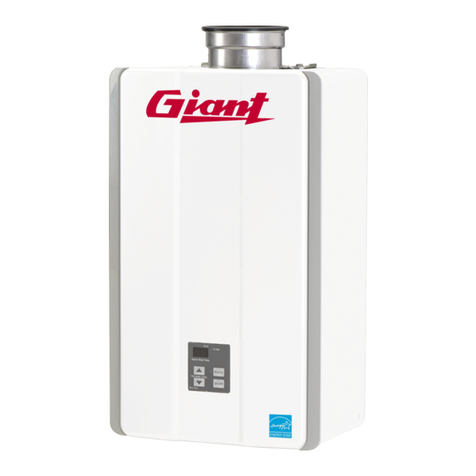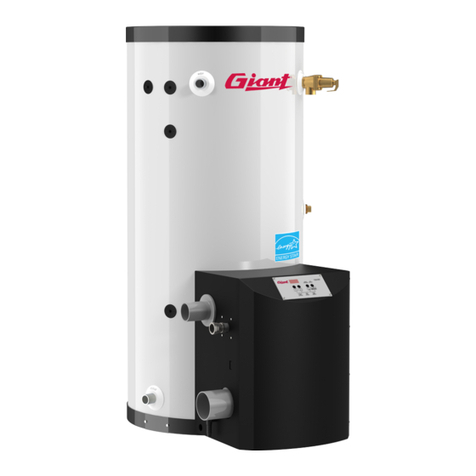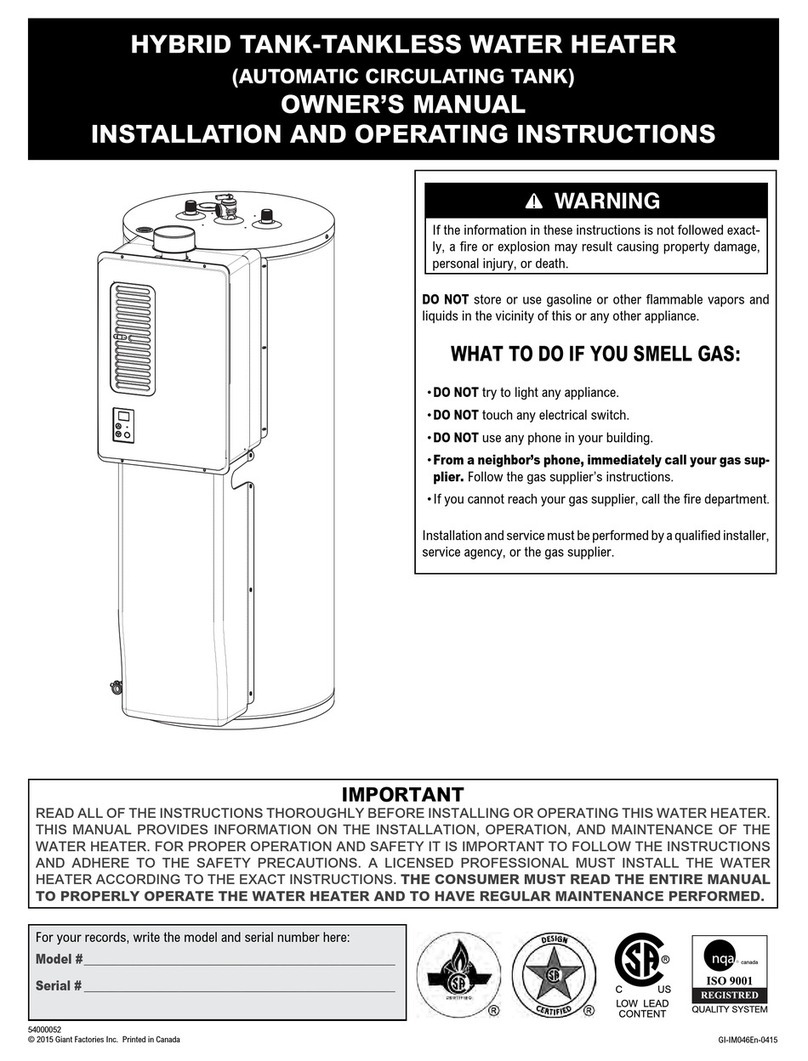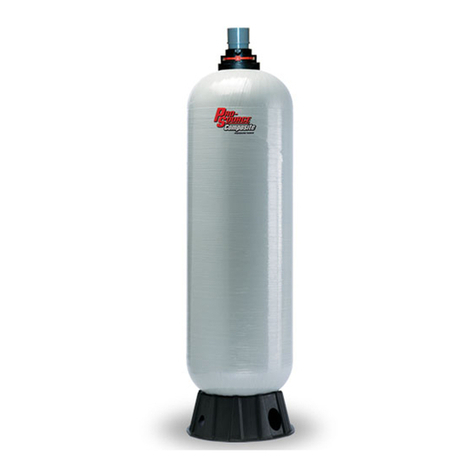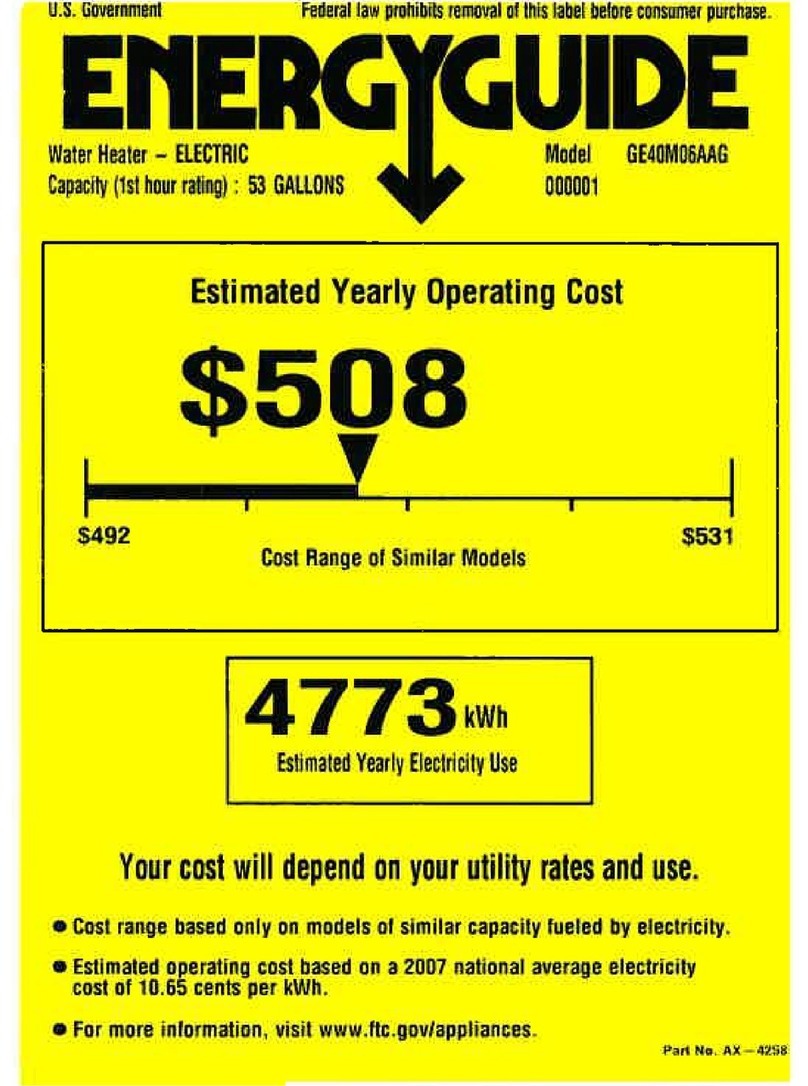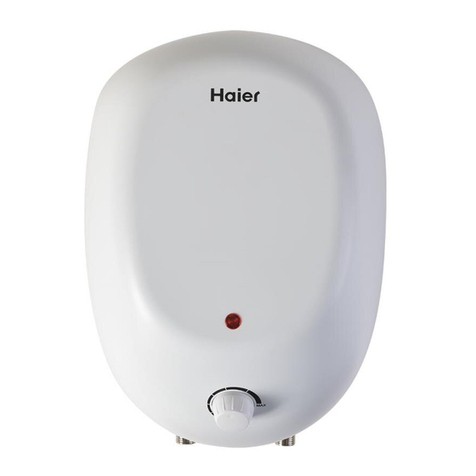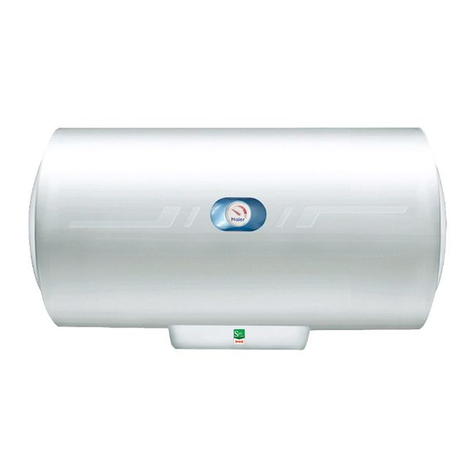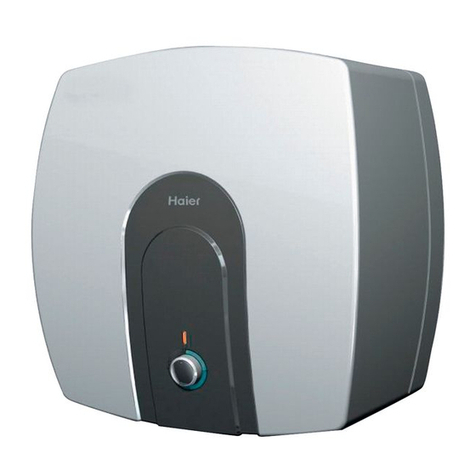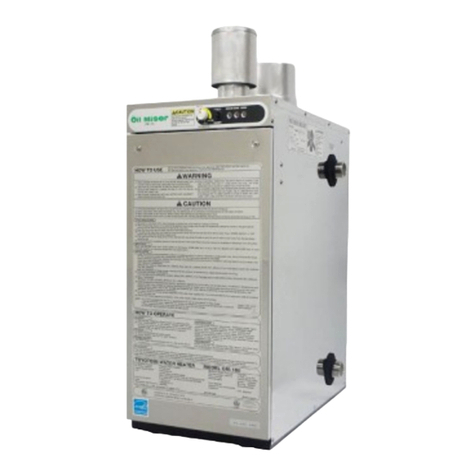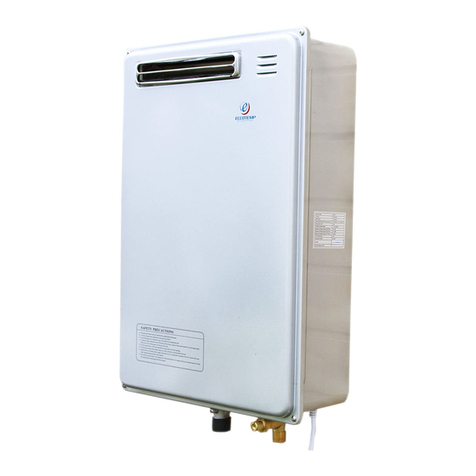
7
Venting
DANGER
When installing the venting system, make sure to follow all
local codes or, in the absence of local codes, CAN/CSA
B149.1, Natural Gas and Propane Gas Installation Code,
in Canada and/or the National Fuel Gas Code, ANSI
Z223.1/NFPA 54, in the United States. Never operate the
water heater unless it is properly ventilated to the outdoors
and has adequate air supply for proper operation. Failure
to properly install the venting system could result in prop-
erty damage, personal injury, or death.
According to the CAN/CSA-B149, Natural Gas and
Propane Installation Code, plastic vent systems
installedinCanadamustbecertifiedtotheSTANDARD
FORTYPE BH GASVENTING SYSTEMS,ULC S636.
Components of the certified vent system must not be
interchanged with other vent systems or unlisted pipe/
fittings. Plastic components and specified primers and
glues of the certified vent system must be from a sin-
gle vent system manufacturer and not intermixed with
other vent system manufacturer’s vent system parts
unless those are certified to be used with this system.
Plastic vent systems shall also be installed such that
the first three (3) feet (91 cm) of pipe from the water
heateroutletarereadilyaccessibleforvisualinspection.
IMPORTANT
This water heater can be vented using only one of the
following options:
• Two (2) inch (5.1 cm) or three (3) inch (7.6 cm) sched-
ule 40 PVC or CPVC pipe and fittings;
• Two (2) inch (5.1 cm) or three (3) inch (7.6 cm) poly-
propylene pipe and fittings from Centrotherm (Innoflue
single wall vent system);
InnoFlue
®
• Two (2) inch (5.1 cm) or three (3) inch (7.6 cm) poly-
propylene pipe and fittings from DuraVent (Polypro
single wall gas vent system).
PolyPro
®
Before installing the vent piping, make sure that the
vent system layout has been properly planned. Verify
that the location of the water heater respects all
clearances from combustible material, all venting
requirements (see Table 1) and that the vent terminal
will be installed as specified by all local codes or, in the
absence of local codes, CAN/CSA B149.1, Natural Gas
and Propane Installation Code, in Canada and/or the
National Fuel Gas Code, ANSI Z223.1/NFPA 54, in the
United States (see Figure 13).
This water heater is equipped with a power venter
that evacuates the products of combustion to the
outdoors. All models are shipped from the factory
with the power venter already installed.
This water heater must be vented directly to the outdoors,
either horizontally through the wall or vertically through
the roof. The venting must not be attached to an exist-
ing chimney or in common with any other appliance and
must not be insulated.
Venting Connection to the water heater
PVC PIPE:
A vent system adaptor should be installed when using
PVC pipes for venting this water heater (see Figure 9).
The vent system adaptor supplied with the water heater
is made of IPEX parts. If another manufacturer of pipe
is used to build the vent system, the vent system adap-
tor must be made from parts of that same manufac-
turer. To build the vent system adaptor, you will need a
23/8”(6.03cm)pieceofCPVCpipeandatwo(2)inch(5.1
cm)PVCcouplinggluedtogetherwiththepropercement.
CPVC PIPE:
The CPVC pipe must be inserted directly into the rubber
transition fitting on the outlet of the blower assembly.
Note: If your installation requires three (3) inch (7.6 cm)
pipe, you must start with two (2) inch (5.1 cm) pipe and
add a two (2) to three (3) inch (5.1 to 7.6 cm) increaser
to change the size of the pipe to three (3) inches (7.6 cm)
(see Figure 9).
POLYPROPYLENE PIPE FROM CENTROTHERM
(Innoflue single wall vent system):
InnoFlue
®
Use special appliance adapter from Centrotherm and
insert into the rubber transition fitting on the outlet of
the blower assembly. Refer to the Table 2 and Figure
10 below for proper part number from Centrotherm. On
the three (3) inch (7.6 cm) vent pipe, an increaser is
necessary.
Table 2 — Centrotherm™
Appliance adapter Increaser
2-inch (5.1 cm) pipe ISAA0202 N/A
3-inch (7.6 cm) pipe ISAA0202 ISIA0203
INSTALLATION INSTRUCTIONS
Table 1 MAXIMUM EQUIVALENT LENGTH OF VENT PIPE - DO NOT EXCEED
PV1 Models only UG40, UG50, and UG60
VENT PIPE DIAMETER 2 inches (5.1 cm) 3 inches (7.6 cm)
Maximum equivalent length* 50.0 feet (15.2 m) 140.0 feet (42.7 m)
Minimum equivalent length* 7.5 feet (2.3 m) 9.5 feet (2.9 m)
One 45˚ elbow is equivalent, in straight pipe, to 3.0 feet (0.9 m) 4.0 feet (1.2 m)
One 90˚ elbow is equivalent, in straight pipe, to 5.0 feet (1.5 m) 7.0 feet (2.1 m)
* Note: Outdoor termination elbow not to be counted when determining total length.


